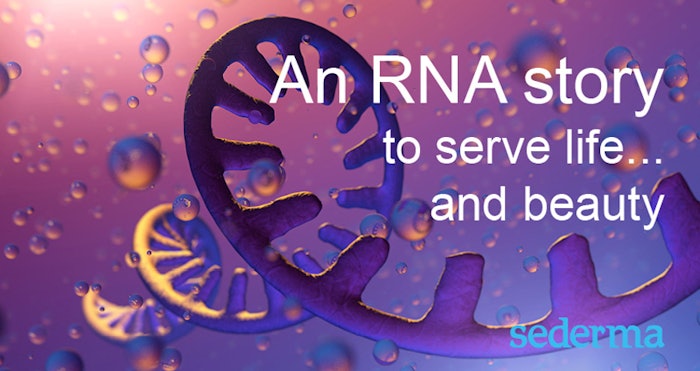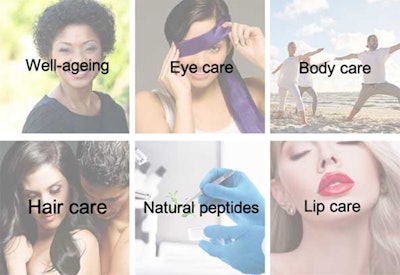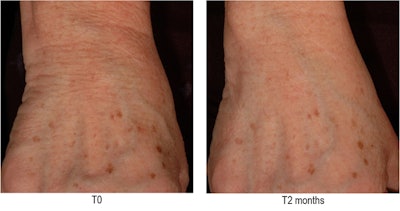
Standing for messenger RiboNucleic Acid, the mRNA acronym is now a mainstream term. This technology, used for the COVID-19 vaccine, is showing great results and it is not surprising. At Sederma we have been using this technology for ages to offer the cosmetic industry efficient active ingredients. Let’s review rapidly how it works and consequently why it works.
mRNA are small coding molecules composed of nucleotides. They are temporary copies of DNA (our body user manual) portion that convey the information to the cells for them to produce the needed material. Each mRNA is coding for a specific material: proteins enzymes, etc.
In the COVID-19 case, the mRNA injected through the vaccine stimulates the production of S-protein, a protein present in the virus that allows its entrance into our organism. This S-protein production (without the rest of the virus) induces the production of specific antibodies by our organism that will prevent infection.
For the cosmetic market, the interest is obvious as the mRNA can boost the production of skin extracellular matrix proteins like collagen and hyaluronic acid, which production decline with age. The visible beauty effects can sustain in the long term as this technology re-educates the skin to act as a young skin, in the same way that the vaccine teaches the body how to defend itself.
mRNA stimulation
Having said that, our peptides are perfect examples. Even if we do not apply the mRNA itself, these biomimetic messengers induce the production of the appropriate mRNAs to produce molecules of interest for wrinkle reduction, skin elasticity improvement, better hair anchorage, lip plumping and anti dark-circles.
 Discover relevant ingredients available for your product developments on Well-ageing, Eye care, Body care, Hair care, Natural Peptides and Lip care.
Discover relevant ingredients available for your product developments on Well-ageing, Eye care, Body care, Hair care, Natural Peptides and Lip care.
mRNA inhibition
Of course, mRNAs also order the cells to produce material that are not beneficial for the skin. That is why Sederma also investigated the micro-RNA (miR). These non-coding small molecules of 21 to 24 nucleotides are fastened to mRNA to avoid their translation by their target cell.
It is the case for Sebuless®, our active ingredient that mattifies and equalises skin complexion of oily and acne-prone skin:
 As shown here, Sebuless® neutralizes the pro-inflammatory potential of P. acnes, the bacteria that triggers seboregulating troubles. (mRNA coding for TLR-2 synthesis: -50%, p
As shown here, Sebuless® neutralizes the pro-inflammatory potential of P. acnes, the bacteria that triggers seboregulating troubles. (mRNA coding for TLR-2 synthesis: -50%, pSenestem®, an eco-designed active ingredient that visibly fades the sign of senescence while enhancing skin viscoelastic properties and brightening senile pigmented spots is another good example. Similarly to Sebuless®, it increases the production of miR that inhibits MMPs (Matrix metalloproteinases) activity involved in extracellular matrix breakdown.
 Crystalide®, our highlighter-like peptide, is the last example that will be presented here as it is based on an inhibition of mRNAs at the epidermis level. Indeed, thanks to a specific vectorization, Crystalide® benefits from a uniform spreading at the skin surface allowing an optimized targeted bioavailability in the epidermis.
Crystalide®, our highlighter-like peptide, is the last example that will be presented here as it is based on an inhibition of mRNAs at the epidermis level. Indeed, thanks to a specific vectorization, Crystalide® benefits from a uniform spreading at the skin surface allowing an optimized targeted bioavailability in the epidermis.Here the inhibition of the production of a protein that prevents a proper differentiation of keratinocytes is allowed thanks to the long non-codingRNA (Lnc-RNA) ANCR = Anti-differentiation Non Coding RNA.
Lnc-RNA ANCR = Anti-differentiation Non Coding RNA

Lnc-RNA are made of more than 200 nucleotides and can inhibit mRNAs but also other metabolisms like transcriptional activation or suppression, splicing modulation scaffolding. It promises many innovations with regards to efficient cosmetic active ingredients. Follow us by registering onto our website.
Disclaimer:
The above paid-for content was produced by and posted on behalf of the Sponsor. Content provided is generated solely by the Sponsor or its affiliates, and it is the Sponsor’s responsibility for the accuracy, completeness and validity of all information included. Global Cosmetic Industry takes steps to ensure that you will not confuse sponsored content with content produced by Global Cosmetic Industry and governed by its editorial policy.










